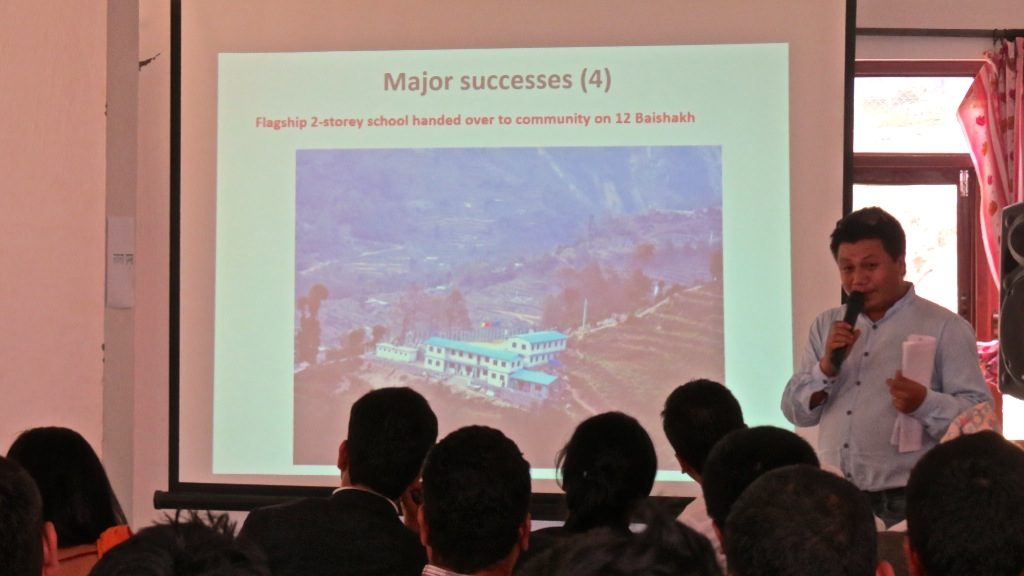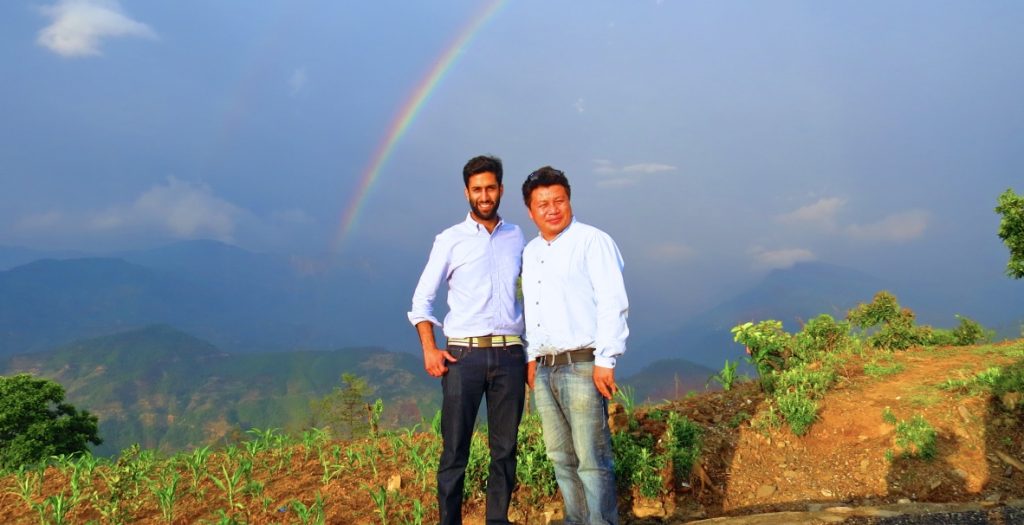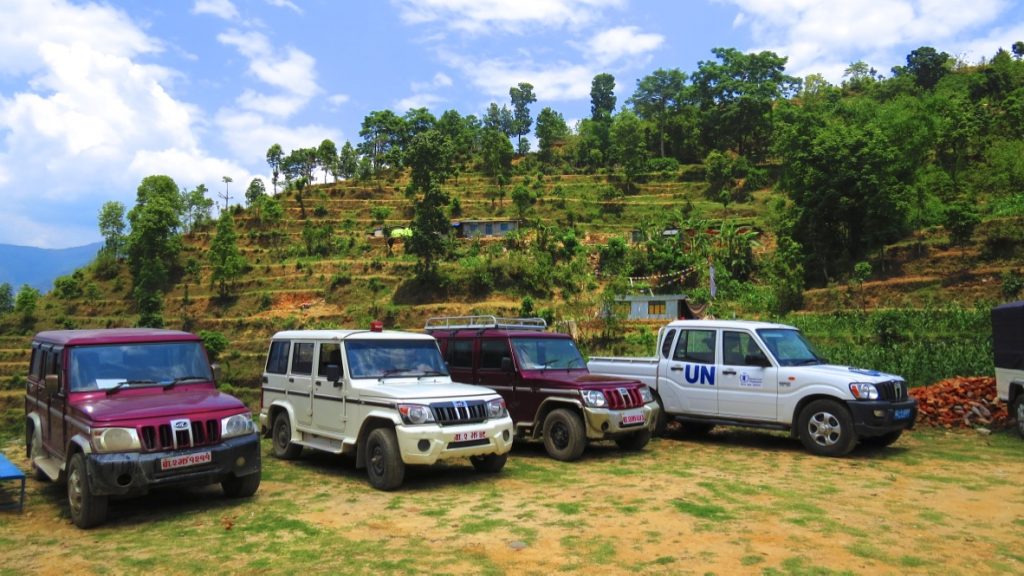Nitish Upadhyaya, one of our trustees recently visited Nepal and tells us his story. Here he tells of meeting with various development agencies. If you haven’t read it yet, catch up on Part 1.
Gorgeous views as we drive to Chautara, Sindhupalchowk for a workshop with the District Disaster Relief Committee. This regional organisation brings together NGOs and INGOs working across various cluster groups (education, livelihoods, health etc.) and gives the district government a chance to evaluate progress in the Sindupalchowk region. It’s a warm day and a long drive. Joined by Nima Tshering from Namaste Nepal who is doing excellent work in a western part of Sindupalchowk. Sad to say that we pass plenty of buildings still in ruins.
A veritable alphabet soup of agencies are present, all providing information and feedback on their projects. One of the presentations is interrupted by a lady from a village in the hills around Chautara: not enough is being done she says, aid seldom reaches those in need. This echoes stories I have heard from others and bureaucracy is partly to blame. But I’ve also seen evidence of regional and international organisations making a big difference too.
Presentation from the government is shocking, even though I’ve heard similar statistics before. Over 3,500 deaths and just under 1,500 injured during the quake. All 547 school buildings in the Sindhupalchowk region sustained some form of damage, many of them collapsed completely (although a number of Mondo-built buildings survived and have been retrofitted and made safe). The Chief District Officer takes us through the DDRC’s response to the earthquake, focusing on lessons learnt and challenges faced.
Our turn as Jimmy takes the floor. HELP is a well-known grassroots NGO, and has strong links with the Department of Education. The international development world is a small one, and we’ve been meeting people Jimmy knows all day. Jimmy takes the group through our immediate response to the earthquake: immediate provision of food and supplies, solar lamps and mobile phones, enabling shelter through the provision of tarps and shelter kits and fleeces to children over the harsh winter. We leave the achievement I am most proud of for last: over 200 temporary learning centres built and resourced by summer 2015 to ensure that children did not miss out on their education, whatever else they had lost in the earthquakes. Prouder still that we are leading the field as other organisations are only now getting their act together.

All of this was made possible by our strong links with the local community – village committees, teachers and elders were all mobilised in the wake of the earthquake. We listened to what the community needed, and did our best to provide them with the resources they needed.
Long drive back, and, as we make our way through the rolling landscape, I’m aching to walk through the hills of Helambu once again.
P.S I realise Jimmy and I were wearing pretty much the same shirt and jeans combo but I’d like to think that’s because we’re on the same wavelength!
If you’ve enjoyed this post, check out the next chapter!





Comments are closed.